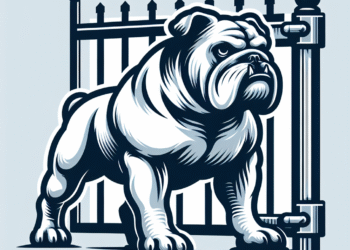Adopting a rescue dog is a commendable decision that brings joy and fulfillment. Among the many breeds that find themselves in shelters, bullies—such as American Bulldogs, Pit Bull Terriers, and Staffordshire Bull Terriers—often face the most stigma. If you’re considering adopting a bully, here’s what you need to know before bringing one into your home.
Understanding the Breed
1. General Characteristics
Bully breeds are known for their muscular build, loyalty, and affectionate nature. Despite their tough exterior, many exhibit a gentle temperament and are excellent family dogs. Understanding their specific characteristics, energy levels, and needs is vital in preparing for adoption.
2. Common Misconceptions
Bully breeds are often mischaracterized as aggressive. This stigma arises from media representation and historical context. It’s essential to recognize that any dog can exhibit aggressive tendencies if not properly trained or socialized. Most bullies are friendly and eager to please when raised in loving environments.
Assessing Your Readiness
1. Space & Environment
Consider your living situation. Bullies often require space to roam and play. A home with a secure yard is ideal, and if you live in an apartment, regular exercise outside is crucial. Potential adopters should also review any breed restrictions set by landlords or homeowners’ associations.
2. Time Commitment
Bully breeds need mental stimulation and physical activity. Regular walks, playtime, and training sessions are necessary to keep them happy and healthy. Make sure you have enough time to devote to your new companion.
3. Financial Preparedness
Owning a pet involves costs beyond basic food. Consider expenses for vet visits, vaccinations, spaying/neutering, grooming, and training. Being financially prepared is crucial for a successful adoption.
Preparing for the Adoption
1. Research Local Shelters
Start by researching local shelters and rescue organizations that specialize in bully breeds. Many organizations assess the dogs’ temperaments and can help match you with a suitable companion.
2. Meet and Greet
When considering a specific dog, arrange a meet-and-greet. Observe how the dog interacts with you and other family members. Look for signs of anxiety or aggression, but remember that some dogs may be shy in unfamiliar situations.
3. Ask About History
Inquire about the dog’s background, including previous experiences, health records, and behavior assessments. This information can provide insights into how to integrate the dog into your home.
Training and Socialization
1. Professional Training
Consider enrolling in obedience classes, especially if you’re a first-time dog owner. Professional trainers can help you establish a strong bond and teach essential commands and socialization skills.
2. Positive Reinforcement
Bully breeds respond best to positive reinforcement techniques. Reward good behavior with treats, praise, or playtime, rather than punishing mistakes, which can lead to fear and mistrust.
3. Regular Socialization
Introduce your dog to a variety of people, dogs, and environments to ensure well-rounded social behavior. This exposure helps reduce anxiety and fosters confidence.
Community Support
1. Connect with Other Owners
Join local or online bully breed advocacy groups. These communities can provide support, advice, and resources. Networking with fellow bully owners can also enhance your understanding of the breed.
2. Advocate for Awareness
Use your experience to advocate against breed discrimination. Share your journey and educate others about the positive traits of bully breeds to help change perceptions.
Conclusion
Adopting a rescue bully can be a rewarding experience, filled with love and companionship. Understanding the breed, preparing for the responsibilities of pet ownership, and committing to training and socialization are crucial steps in ensuring a successful adoption. By embracing these lovable dogs, you not only save a life but also have the opportunity to break down stereotypes and advocate for a misunderstood breed.














